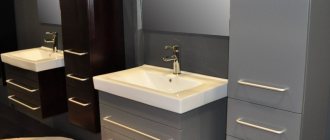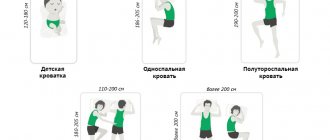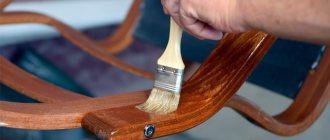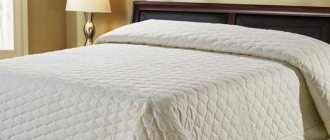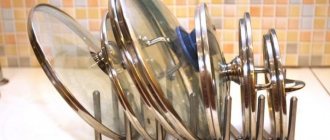Features of eccentrics
Eccentric for mixer
The design of the eccentric for the mixer is a tube with threads at both ends and with a shifted middle part. Adjustment of dimensions between joints is carried out thanks to this kind of transition. The name “eccentric” consists of two words: “ex” (outside) and “center”, which stands for “outside the center”. The part has two different thread diameters at the edges: wide and narrow. Their sizes are 15mm and 20mm. The standard distance between the axes of the inlets of water pipes is 150 mm.
There are several types of adapters: short, extended and long:
- Adapters with a small shoulder are standard designs of 3-4 cm, usually included with the mixer. In addition to the eccentrics, reflectors are provided - decorative overlays that hide the connections of plumbing fittings. With the help of such adapters, you can adjust the distance up to 8 cm.
- Products with an increased shoulder - are installed when pipes or other obstacles interfere with the installation of the mixer, and allow you to move the faucet from the wall to the required distance.
- Designs with a large shoulder distance - used when there is a significant difference between the outlet distances of water pipes and the mixer pipes.
The length of the eccentric arm is an important characteristic. It indicates the possibility of increasing the distance between the installation points of the connection nodes. Products are available in sizes 40 mm, 60 mm and 80 mm. There are corresponding markings: M8, M10 and M12.
When connecting the mixer to difficult conditions, eccentrics of non-standard sizes are used. This type of adapter allows you to install the system regardless of the location of the water supply outlets.
The most commonly used products are brass, bronze and stainless steel. According to consumer reviews, budget metal or brass options with a chrome finish are in great demand. Adapters made of brass are preferable, because No rust forms on threaded connections.
The disadvantage of inexpensive products is their fragility when unscrewed from water pipes.
Extensions made of powdered pressed brass, even with slight tightening, often burst and have the only positive quality - low price. Good brass adapters should be solid.
The high quality of eccentrics is guaranteed by well-known companies:
- Remer - extension cords produced by an Italian company. They are of excellent quality, but have a high cost: from 400 to 600 rubles, depending on the shoulder distance.
- Timo - adapters come complete with decorative overlays. Price from 600 rubles.
- Grohe - products made in Germany, made of brass, chrome plated. High quality adapter, price 2500 rubles.
The installation adapters supplied with mixers are generally not suitable in size or quality. Therefore, the purchase of a mixer also implies the additional purchase of eccentrics.
You should not buy shiny, chrome-plated adapters made in China or Turkey. Despite the attractive external indicators, the quality is questionable. Products are susceptible to rust during use. Often, even during installation, the head breaks off.
How to install it yourself
Often, installing an adapter is the responsibility of a plumber, but it happens that there is a need for independent installation. This process can be divided into two stages:
- installation of eccentrics;
- installation of adapters on the mixer.
First of all, you should make sure that access to the water supply is blocked. This ensures that if something goes wrong, the neighbors below will not be harmed.
In order to make sure that the product is complete, it is necessary to assemble the structure without using seals, check all components for distortion, and whether there is any jamming in the threaded connections. Are all the details involved, is there anything superfluous, or vice versa?
The second stage of work is connecting through eccentrics for the mixer, the dimensions of which must be checked in advance with other components. The eccentrics consist of two parts - wide and narrow threads. Linen or winding must be wound onto a narrow thread. It is necessary to wind in a clockwise direction so that the winding does not move while twisting the product. Thread paste is applied to the flax thread; it is also possible to use silicone sealant. You can also resort to the old method of winding thread, using oil paint. After installing the eccentrics, be sure to make sure that the interaxle dimensions are observed. Using a horizontal level, check the position of the eccentrics, which are in the center. They should be at zero level. If during work when installing the mixer eccentrics it suddenly turns out that the length of the adapter arm is insufficient, then in this case it is necessary to purchase a longer one.
Decorative reflectors are used to neatly cover pipe openings. At the final stage, the mixer is installed.
Criterias of choice
Faucet adapters are an important element when installing in a bathroom. The domestic plumbing market offers a wide range of extension cords. When choosing, it is recommended to pay attention to the following characteristics:
- dimensions;
- design features, thread location (internal or external);
- corrosion resistance;
- what distance can be compensated by installing an extension cord;
- the strength of the product so that it can be screwed on without the risk of breaking;
- adapter design to blend seamlessly with the overall style of the room.
When choosing an adapter, first of all, the dimensions of the connection pipes of the water fittings are taken into account. You can take measurements using a regular ruler.
Appearance and characteristics
By rotating the eccentric in a circle, you can achieve perfect joining of the pipes with the mixer pipes. In other words, it acts as an adapter, helps ensure a reliable connection and makes the installation process easier. Using this part, you can install faucets from a variety of manufacturers in the bathroom, toilet, and kitchen.
Note! The side with a larger diameter is connected to the mixer, and the side with a smaller diameter is connected to the water pipes. One mixer requires two eccentrics.
Often these parts are included in the faucet kit and are listed in the installation instructions. If they are not available, then it is easy to find such products for sale separately.
The eccentric parameters that people pay attention to are the following:
- manufacturing material. The part is made of bronze, brass, stainless steel, and very rarely copper;
- shoulder size. Shows how much the cylinder axes are shifted relative to each other, maybe 40, 60, 80 mm;
- the presence or absence of an internal thread on one of the sides (the thread can only be external);
- eccentric length. It comes in standard (short) and long.
Some manufacturers, for aesthetic purposes, coat the adapter with decorative paint that imitates gold, silver or copper, but this does not affect the quality. The devices are designed for a distance between pipes of 150 mm. Prices vary depending on the manufacturer and the material used. Sometimes the differences in cost are significant, so you need to carefully study the store offers.
Installation method
Product installation
Before starting installation, you should pay attention to a few tips:
- the presence of the entire mixer package is necessary;
- correspondence between the standard sizes of the eccentric and the mixer;
- fum tape or other sealant is screwed in the direction of the thread;
- To seal over the seal, gel sealant or oil paint is used.
If there are plastic pipes, the material used to make the eccentrics does not matter. If metal, then adapters are used exclusively from the same metal. Different coefficients of thermal expansion of materials can lead to rapid wear resistance and leakage.
In order for the installation or replacement of eccentrics to proceed efficiently and quickly, it is necessary to prepare the following tools and materials:
- pliers;
- Adjustable wrench;
- set of wrenches;
- fum tape or tow;
- material for sealing connecting nodes.
Before carrying out work, it is necessary to ensure that the water is turned off to avoid flooding. Installation procedure:
- Assemble the entire structure of the mixer; no seal is used. This is necessary to check the product for distortions and smooth connection of all components.
- After carefully dismantling the old eccentric, carefully wind the sealant onto the threads. This must be done tightly so that the fum tape or tow does not scroll on the base.
- Apply sealant to the seal.
- Manually screw the eccentrics onto the structure.
- After making sure that the adapters are seated on the threads, tighten them using a wrench or an adjustable wrench. You should not squeeze the product: this will not make it more airtight, but there will be chances of breaking it.
- When using a wrench, make sure that the seal does not turn around, otherwise it will break the seal of the connection. If this happens, it is better to dismantle the entire system, replace the seal and start installation again.
- It is advisable to install the eccentrics so that it is convenient to screw the mixer nuts to them.
The structure itself is fixed evenly using a level. Then the overlays are installed, they are also called decorative screens.
After the mixer is completely installed, it is necessary to open the water and check the connections for leaks.
If a leak is detected after turning on the water, it is necessary to disassemble the structure and check the integrity of the seal and sealant on the threads of the fittings. If necessary, change parts.
Selecting the right model
To purchase a suitable part, you need to know the distance between the pipes and the parameters of the mixer. If the difference in distances is significant, then it is worth buying an extended eccentric with the largest shoulder. Such parts are usually not included in the kit.
Advice! For a mixer with a pipe, you need an eccentric with an internal thread. This is the only way it can be connected.
The diameter for connecting pipes is 1/2 or 3/4 inches, so the eccentrics fit all standard water pipes. Very rarely there are unusual shapes of products that require an individual approach.
For plastic pipes, the metal of the adapter does not matter, but for metal pipes it is desirable that the materials match. This ensures equal thermal expansion and response to internal water pressure, ultimately eliminating leaks. In any case, with ordinary steel pipes, experts advise choosing brass or bronze products - this will be the best option. Brass adapters must be solid.
Unscrupulous manufacturers spray metal of poor quality, passing off parts as more expensive. With constant contact with water, they quickly break down, fail, and leaks begin. To avoid mistakes, you need to buy eccentrics from suppliers you trust, or contact specialized brand stores.
What types of eccentrics are there and is it possible to do without them when installing a faucet in a bathroom?
Basically, a universal type of eccentrics is used for mixers with dimensions of no more than 50 mm. in length, on one side there is a 3/4 inch thread, on the other 1/2. The offset of the cents is 10 mm, which when installing the mixer gives a very wide adjustment range from 130±1-2 mm. up to 170±1-2 mm, while the standard center-to-center distance of mixers is 150±1-2 mm. It was to compensate for the difference in distance between water outlets and faucet attachment points that they were invented.
For “exclusive-local” applications, eccentrics can be shorter or longer, and their center-to-center space can be more than 10 mm. The choice of required eccentric shapes depends on the specific installation conditions.
In the photo below are ordinary, universal eccentrics, with a center-to-center distance of 10-12 mm. —
These eccentrics, in addition to the fact that they have a fairly large center-to-center distance, at the same time also perform a decorative function that excludes the use of chrome-plated cups.
With eccentrics of this type, you can not only install the mixer on water outlets that are too wide, but also even raise the mixer, for example, above the sink, if it works simultaneously on a bathtub and a sink. Such eccentrics can be one of the solutions to the problem of a faucet that is low to the sink.
Yes, you can do without eccentrics. Especially if it is possible to move or expand the outlets of the hot and cold water pipes (at least one of them) along the width of the mixer connecting nuts. You can use a regular adapter (nipple or “barrel”) of the corresponding thread diameters on the mixer and on the pipes.
Even at the installation stage, having a mixer, you can install pipes with couplings, attach nuts, and in this position tighten them through bronze nipples, and in this position “freeze” (weld the pipes). However, be prepared for the fact that the maintainability of such a design is sharply reduced, since even according to TU and GOST, the center-to-center distance for mixers can be 150 plus or minus 1 - 2 millimeters. During subsequent replacement, if the new mixer fits perfectly, then you are lucky, but if not, then again you can remember about all the same eccentrics. Turn the barrels out and screw the eccentrics into the couplings.
I myself installed faucets directly on polypropylene couplings through 3/4 x 1/2 nipples, but not in such critical places as, for example, a room for year-round use. At the dacha - please. So, if the water station is at a pressure of 2.5 Atmospheres, I think such a mount is quite suitable.

